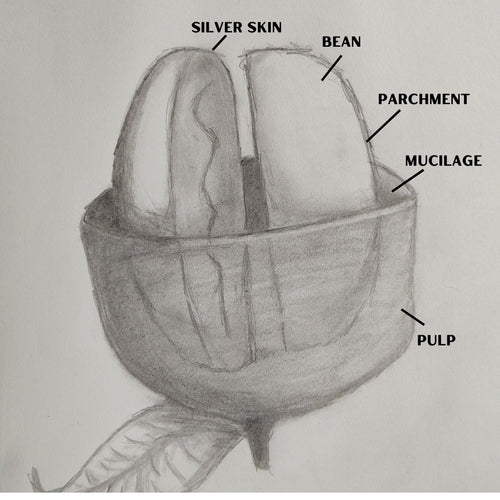Coffee Cherry Anatomy 101

Understanding the parts of the coffee cherry, helps with understanding the different processing methods after harvesting.
Coffee cherries are the fruit of the coffee plant. Traditionally, they have been processed using three methods: washed, honey, and natural. In recent years, however, innovative producers have started experimenting with new, unconventional and alternative processing techniques such as anaerobic fermentation.
The WASHED method - removes the outer pulp and mucilage and is then dried.
The HONEY method - removes the outer pulp and only some of the mucilage then is set to dry. Once it reaches a certain moisture level, the rest of the mucilage is removed and then continues to dry. (it's so named for the sticky "honey-like" mucilage. There isn't any actual honey involved in this process.)
The NATURAL method - doesn't remove any of the outer layers before drying. The cherry is dried to a certain moisture percentage and then the pulp and mucilage are removed.
The ANAEROBIC method - the cherries (either whole or de-pulped) are fermented in oxygen free tanks for a specified time, then dried.
Different processing methods produce different acidity, body, and flavor profiles.
Once we receive the green coffee, the parchment and the silver skin are removed during the roasting process in the form of chaff. Regular coffees have more chaff than decaffeinated ones.